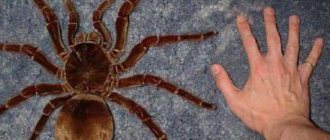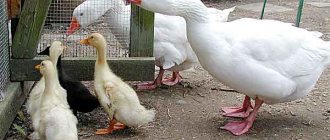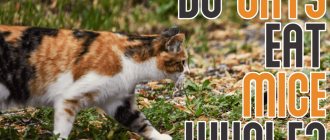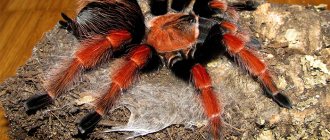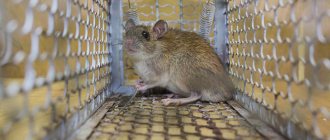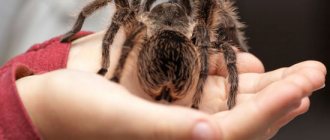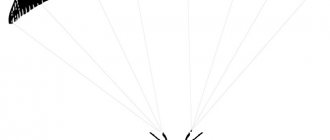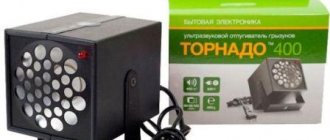Colorful decorative birds delight the eye and improve the mood with their singing. Goldfinches, canaries, siskins, falcons, and blackbirds are kept in the apartments. Birds do not require special conditions of maintenance and nutrition. Cockatoos, Grays or owls are another matter. They attract with their appearance, but require a responsible approach and a lot of attention from the owners. We will tell you about common types of birds that are suitable for keeping at home.
Parrot
The first place is occupied by the most common pets - parrots. Their diversity is great in color, intellectual abilities, size and tameness. However, these tropical birds cannot tolerate drafts, low temperatures, or loneliness.
The most popular among parrots are:
- Budgerigars are friendly, curious, trainable birds. They are unpretentious in care, the basis of nutrition is grain mixtures and affordable fruits and vegetables. They become attached to their owner and love communication and games. The compact size of the wavy allows its cage to be placed even in a small room.
- Corella is the “golden mean” among the representatives of the family. It is characterized by increased activity, therefore it requires a more careful selection of the cage and its location in the apartment. Cockatiels are very sociable, remember a lot of words, imitate sounds, and learn easy tricks. The basis of nutrition is grain mixtures and various additives (fruits, vegetables, herbs).
- Lovebirds are the most romantic of parrots. Caring couples sweetly look after each other, are very sociable and active. Small body sizes require a large cage equipped with toys and perches. They are unpretentious in food.
- The cockatoo is a long-liver among parrots; with proper care, it will become a member of the family for 50 years or more. The bird's intelligence is high, as is its need for communication. Onomatopoeia, memorization and speech recognition come easily to him. However, this can be a significant disadvantage. Without proper upbringing, the cockatoo will become a tyrant at home. With its large and hard beak, it will damage furniture, things, and interior items. Outbursts of aggression, excessive irritability, loud screams and conversations of the bird are possible. The large size of the cockatoo requires a spacious enclosure and frequent walks around the apartment.
- Jaco is a nondescript looking but very smart parrot. They perfectly imitate human speech, repeat words and understand them. They require constant attention and communication, otherwise they begin to get bored and sad. They learn various tricks easily and with pleasure. It is important to properly raise a Gray from childhood in order to establish rules for living together. A Gray's cage needs a large one, with many crossbars, toys, and mirrors.
- The macaw is the brightest and largest among the parrots. Therefore, for normal maintenance he needs a full-fledged enclosure. A parrot's strong beak is both its tool and a problem for its owner. Birds can damage furniture and various objects. The bars in the cage must be steel and the frame must be strong, otherwise the macaw will quickly find weak points in it. He is very attached to his owner and can become stressed in his absence.
However, parrots are not the only domestic birds, although they occupy their rightful first place in the rating.
What birds are suitable for keeping at home?
What birds can you keep at home? Traditionally, small birds that tolerate life well in captivity are selected for such maintenance.
Signs of birds that do well in a cage:
- small size;
- thermophilicity;
- unexpressed need for long flights;
- unpretentiousness;
- love of communication;
- need for proximity to people;
- low desire to return to freedom.
Large predators should not be kept at home. It is difficult for them to get used to life in captivity. Some individuals are accustomed to a nocturnal lifestyle, others cannot live without hunting, and still others cannot live without long flights. At home, it is difficult to choose a suitable diet for large predators. Lack of proper nutrition and constant presence in a cage can cause the bird to become sick and die.
Tamed tit
Goldfinch
Goldfinches have been successfully kept in captivity. They are distinguished by an attractive decorative appearance, melodic singing, and small size. It is impossible not to note the singing of goldfinches: their repertoire includes up to 20 different trills.
In addition, they quickly become tame and learn simple tricks. Despite the small size of the bird, you should give it a spacious cage so that the goldfinch has space for activity.
To feed the birds, grain mixtures are used, as well as animal food - ant pupae, mealworms.
Amadin
Finches - exotic relatives of finches - are presented on the market in several varieties, but for beginners we can recommend the most unpretentious species - Japanese finch . The color of the plumage of this species is quite modest: the head and crop are dark brown or reddish, the chest and belly are light beige, the wings, back and tail are brown. But such a discreet appearance, compared to their more exotic counterparts, is compensated by the fact that they are not noisy at all and sing very melodic songs.
Being small in size (10-15 centimeters), Japanese finches take up little space and are therefore suitable for a small apartment. While these birds certainly need plenty of space, their cages don't have to be huge.
Amadin is a social bird and prefers to live in a flock, so several finches should be kept in one cage. If the Japanese finch does not have a company of birds, then it will not be able to live alone for long, and soon it will stop singing, get sick and may even die.
At the same time, human attention is not particularly important for these birds. In addition, they really do not like to be picked up or given too much attention. In order for finches to have the opportunity to retire in a cage, there must be a nest or nest box equipped there. You will also need perches at different heights so that the birds can flutter on them.
One of the most favorite pastimes of finches is swimming, so you also need to install a “bathroom”. These birds are intended to be kept exclusively inside a cage, and it is not only not necessary to let them out into the room, but in principle it is undesirable.
For nutrition, they need food for exotic birds, and the mixture must include such components as multi-colored millet, canary seed, and meadow grass seeds. The diet is supplemented with rapeseed, oats and hemp seed. In addition to grain feed, the menu of such birds should include vitamin supplements: vegetables, fruits, berries and herbs.
Also, beginners can try another type of finches with a slightly brighter appearance - zebra finches .
Finches. © The Bard on the Hill
Duck
A waterfowl with webbed feet and a wide flat beak, it belongs to the order Goose. The ancestor of all domestic ducks (except the Barbary), which evolved from another domesticated species, is the mallard duck (Anas platyynchos). There are many breeds of ducks on all continents.
In France, in particular, one can name the Rouen duck (non-fertile, with plumage reminiscent of a mallard) and the Pekin duck (yellowish-white, weighing 3.5-4 kg). There are many Barbary ducks on farms; the male weighs 4.5 kg.
Duck eggs are mainly used only for making confectionery. But its meat has always been highly valued, in particular, breasts, which are in special demand. Some breeds are specially bred for the production of delicacy pate. Finally, there are decorative breeds.
“I want a bird!” Small species of birds.
Today we’ll look at small birds that you can keep at home.
First, let's look at their positive aspects: Any bird, no matter how neat it is, craps. Sometimes a lot. This lies in many factors: it flapped its wings and dust, grains, feathers and much more scattered. Birds also love to chew everything that is given to them. Twigs, paper, leaves, fruits. All this will definitely end up on the floor. Birds also shit a lot. Everywhere and always. There are well-mannered birds that go into a cage, but this is rare. So be prepared to encounter mines from your feathered friend everywhere.
+ Small birds scream much more quietly.
If you compare the necklace and the same finch, the difference is obvious. My Jeffrey necklace has a ringing and very loud voice, like a squeaky toy when the finches croak softly.
And which of the small representatives of the feathered family can you really buy in almost any city?
Zebra finches are sold everywhere, they resemble our sparrows in that they live in flocks, they are just as friendly, boys are clearly different from girls in their patterns. Boys have clear stripes on their chests, like a zebra, while girls are devoid of identifying features, but this does not make them any less beautiful.
The price of such a miracle ranges from 500 to 2000 rubles per bird. Prices can vary greatly in different cities.
What are the advantages of these birds themselves, in my opinion?
+ Relatively quiet voices. These birds are far from being lovebirds; if you keep them in pairs, then there won’t be an orchestra like in the video. For me, their voices are quite tolerable and even pleasant.
+ Fun characteristic of all birds. These are special habits, rituals and much more. Everyone will find something to fall in love with this bird.
In addition to zebra finches, you can also find other representatives of finches on sale, the prices of which are higher.
Almost everyone probably had wavy hair. These are cheerful birds with many different colors that get along well with other birds, and what is important: parrots are able to learn to talk.
At the moment, you can find two varieties of budgies on the market, namely:
Czechs, show parrots.
Personally, these birds make me laugh and scare me at the same time. They cost much more than their regular counterparts, and their beauty is quite controversial. However, everyone has their own tastes. Perhaps someone will be delighted with such shaggy birds.
Well, the usual ordinary wavy lines.
In general, the birds are wonderful both for keeping alone and in pairs.
Well, the advantages of wavy ones in my opinion:
+ Extremely cheerful and funny guys. The birds communicate funny with the mirror, as if whispering something to their reflection, and dance on their perches.
Fights are also common between canaries. Even a girl and a boy can fight among themselves if the lady somehow doesn’t like the gentleman. Therefore, they often buy one canary, but at the same time it will require a lot of attention from a person.
You can also find on sale such fashionable creatures as the crested canary
. A charming creature with a wonderful hairstyle, isn't she?
There are also curly canaries
, which look no less interesting.
Prices for canaries vary greatly depending on the species and gender. A canary can cost 5000, but a canary can cost 1500.
What are the advantages of canaries?
+ Mobile bird. It is recommended to keep several perches in the cage, as canaries like to flutter from one to another.
Thank you for your attention!
IMPORTANT: I looked at the birds that I like and that are available for purchase in almost any city. Some data is presented personally from my experience, or from the Internet.
Source
Corvids
Magpies, crows and crows are quite common as pets. However, they are quite complex in content. It is very interesting to observe their behavior: their high intellectual abilities will not let them (and the owner) get bored.
You can teach birds some tricks, words. They understand human speech well. A cage for large corvids is not suitable: a full-fledged enclosure and frequent cleaning are needed. In small cells they can become irritable and injured.
The omnivorous nature of birds simplifies their feeding. Both meat products and vegetables and fruits are suitable.
Finch
Finches are small sparrow-sized birds with very mottled plumage on males and greyish plumage on females. Finches are widespread in the middle zone and their beautiful singing can be easily heard in gardens and parks in spring. Due to their high unpretentiousness and endurance, these birds are also often kept at home.
If you are looking for a pet that can get along without you most of the time, then the finch is a great option. These are lively, nimble birds that move quickly around the cage and are very funny to watch. However, finches do not like to climb bars, so make sure the cage is large enough for them to fly on.
These birds should always be kept in pairs or in a flock as finches are very social by nature. The flock cage must be of sufficient size, because if it is too small, it can lead to fights between the birds.
Finches are suitable birds for babies, as they do not like to be interacted with, ideally - observation from the side. Be sure to put all the necessary supplies for building a nest in the cage. Once nesting time comes, the finch will drag feathers, pieces of lichen, grass, woolen threads and twigs to the chosen place and begin its creative process.
In the spring you can feed them with larvae and place branches with young leaves, but the main diet of finches consists of grain mixtures with the richest possible composition.
Finch. © why-why
What is needed to keep a bird in captivity?
What do songbirds need to keep at home? These requirements are different for birds that previously lived in the forest and for exotic pets.
For the forest
Forest birds for home keeping require the preservation of at least part of their former freedom, so a free aviary or a large cage is required for them.
What else will you need:
- a feed ration consisting of grain, soft food with protein and green fodder;
- communication - most of these birds are paired creatures that can get bored when alone;
- ventilated, bright room;
- the correct location of the cage - one side of it should look out the window, the other should lean against the wall;
- cover with a cloth at night to reduce sharpness from changing lighting;
- plants in a cage to create coziness;
- sticks of different sizes and sizes for sharpening the beak;
- sandy bed with pebbles of different sizes;
- bath for hygiene procedures.
Even though forest birds are not suitable for domestic living, if certain conditions are created, such birds can live well with people and delight their owners with their singing.
For exotic
Exotic birds for home keeping in apartments are very common. To keep your pets from getting sick and to be in a good mood, you need to create the necessary conditions for them.
What you will need:
- a cage of a suitable size;
- perches of different sizes;
- cloth to cover the cage at night;
- sippy cup and feeder;
- bathing container.
Accessories and cage for keeping birds
It is easier to keep exotic birds than forest birds. They have been bred for such maintenance for a long time, so they are more adapted to life in captivity.
Industry Features
The share of homestead farms accounts for more than a third of eggs and poultry produced in the country. Of course, some of it is used by farm owners, but the lion's share ends up on the market. And the sale of products gives a noticeable increase to the family budget, because maintenance costs are significantly lower than profits. And there are certain reasons for this:
- Food waste from the kitchen, garden, and grain are used for fattening Natural food from reservoirs;
- keeping poultry does not imply exorbitant costs for the construction of a poultry house and equipment;
- Poultry farming can be practiced in any region of the country , even remote ones.
Recently, elements of industrial technologies have been gradually introduced into the practice of home poultry farming, new crosses have appeared, and this makes it possible to obtain products all year round.
Pros and cons of buying a parrot
If you plan to purchase a pet for a child, then the advantages and disadvantages of choosing a parrot are evaluated.
The advantages include:
- if you watch the active games of a bird, your mood will rise;
- provides the opportunity to communicate with an intelligent interlocutor;
- children are happy to repeat words while teaching their pet;
- It is impossible to get bored alone at home, as the birds communicate, play and do other fun things with all family members.
Some parrots are so empathetic that they notice the bad mood of their little owner, so they try to cheer him up with games.
The disadvantages of having a parrot include the fact that the bird needs to be given a lot of attention, so if the child gets tired of it, the parents will have to take on this responsibility. This pet is not suitable for people who spend a lot of time outside the home. We have to deal with cleaning, feeding and changing water every day. Early in the morning, the bird often wakes up households by screaming, running around and other loud sounds. Sometimes parrots completely damage paintings, shoes, clothes and interior items.
Budgerigars
Budgerigars are the most popular variety of parrots among pets. They are indeed very friendly and affectionate pet birds if cared for properly. Budgerigars are small in size and very cute to look at. Plus, they can even be taught to perform a few tricks.
The undeniable advantage of budgies is also that they can learn to speak relatively easily. This makes them incredible pets that are not only adorable, but entertaining as well.
Most often, budgies have a bright green or yellow plumage, but there are also some blue or white-blue individuals. Any color is characterized by a pattern of dark stripes on the wings and neck.
The cage with these birds is placed in a lighted place where there are no drafts. The usual mixture for budgies from a pet store is perfect as food. The cage must be equipped with special perches and devices for games. You can keep either one parrot or a pair of different sexes.
Budgie. © Prozeny
Feedback from poultry owners
Owners of birds living at home note the following features of such a neighborhood:
- it is better to choose parrots or nightingales, canaries for home ownership - they are better adapted to life in captivity;
- It’s better to avoid predatory crows, magpies, and owls;
- caring for goldfinches and starlings is not difficult;
- Bullfinches are a very beautiful bird, but it is better to watch them from an apartment window.
The best birds for home are those that can get along with humans, do not require special food and do not have the desire to fly a lot.
Lovebird
This parrot also has a very distinctive appearance. Most often, green lovebirds with a bright orange spot on the head and neck are found on sale; there are also lovebirds with a dark-colored head. This parrot can also be suitable for beginners, however they will be a little more difficult to handle than the two mentioned above.
A lovebird can easily live alone without any problems. You can purchase a male of this parrot as your first pet. They are slightly larger in size than a sparrow - 14 centimeters. Games and tricks are the favorite pastimes of these birds. By equipping the cage with various devices for games, you can also hang a scarf like a swing; these birds love to relax in them.
Lovebirds live up to 20 years and you can expect them to play regularly in their beautiful cage throughout their long lives. They most likely will not reproduce human speech articulately, like budgies, or it will take too much work to teach them at least a couple of words. Lovebirds make calls and whistles, and are considered quite noisy birds.
These parrots are unpretentious in food, and a regular grain mixture with the addition of fresh herbs and a small amount of vegetables is suitable for them. It is better not to let these birds roam around the apartment without supervision, otherwise furniture, TV and computer may be damaged.
Lovebird. © Peter Bekési
Canary
Canaries are known for their bright plumage, as well as excellent vocal abilities. These birds are found in bright yellow, brown, green and bright orange colors. The canary is one of the best songbirds for beginners. She actually feels quite happy just being in her cage and singing her delightful trills.
This feature makes these birds ideal pets for busy owners, because canaries do not like to be interacted with too much. Overall, if you are looking for a pet for a young child, then a canary is a good option as you can simply watch this wonderful feathered pet and listen to it sing. The threat that the bird may show aggression and harm the baby is minimal.
In a canary cage, you need to place several perches at different heights, since these active birds love to flit from place to place. Also, be sure to place a “bath” in the cage, because canaries simply love to splash in the water.
Unlike parrots, you should not let canaries fly around the rooms, because they are very vulnerable creatures, and there are many dangers for them in the apartment. When choosing a place for a cage, you need to take into account that they do not like drafts, which can easily make them sick. In captivity, canaries live from 8 to 15 years. The canary's main food is a grain mixture from a pet store.
Canary
Growing and care at home on a personal plot for beginners
This is a promising direction in business. If you organize your farm correctly and find a market, you can not only feed your family, but also earn a good income.
Usually in the country they limit themselves to seasonal breeding. They buy young birds in early spring, raise them to the desired condition, get eggs, slaughter the birds and sell the meat or use it for their own food.
Which bird is more profitable to raise at the dacha - meat, egg or mixed?
Poultry is bred for meat, eggs and by-products (feather, down, droppings). Meat breeds have been bred, egg-bearing and mixed breeds - meat-egg breeding.
Table: How much meat and eggs can be obtained from representatives of different species
| Name | Weight of one carcass, g | Number of eggs per season, pcs. |
| Chicken | 1000-3000 | 300 |
| Turkey | 9000-19000 | 80-120 |
| Quail | 200-250 | 200-300 |
| Guinea fowl | 2000 | 200 |
| Pheasant | 1000-5000 | 25-50 |
| Pigeon | 450 | 2 |
| Goose | 6000-11000 | 30 |
| Duck | 3000-6000 | 150 |
To get meat
From the point of view of obtaining meat, turkeys are the most promising. Traditionally, chicken meat is in demand. Ducks and geese are usually bought for a festive feast.
Duck “builds up meat” very quickly. After a month and a half of increased nutrition, the duckling will turn into a well-fed duck weighing from 2 kg.
eggs
Chickens are the champions in laying eggs. Quail eggs are in good demand. Turkey and guinea fowl are rarely found on the market despite their high taste. Pigeons are very highly prized. Find out about raising turkeys in your homestead from this article.
related products
In addition to meat and eggs, production by-products can also be used profitably:
- down and feather;
- litter.
The products are used for stuffing pillows and blankets. They are used to make insulation for winter clothing. In terms of quality, the down of geese and ducks is most valued. The feathers of turkeys and chickens are less elastic. Feathers can be used to create warm beds. They are placed in a trench to heat the bed.
Bird droppings contain many useful micro- and macroelements. The composition of feces depends on what pets are fed.
Table: Composition of droppings of different poultry
| Name | Nitrogen | Potassium | Phosphorus | Calcium | Quantity, from one bird per month (kg) |
| Chicken | 1,6 | 0,8 | 1,5 | 2,4 | 6 |
| Duck | 0,7 | 0,6 | 0,9 | 1,1 | 12 |
| Goose | 0,5 | 0,9 | 0,5 | 0,8 | 18 |
| Turkey | 1,8 | 0,4 | 0,6 | 1,0 | 13 |
| Quail | 1,5 | 1,0 | 1,5 | 2,0 | 1 |
| Pigeon | 2,0 | 2,0 | 2,0 | – | 3 |
Rules for maintaining a household plot
It is necessary to build a poultry house and equip a walking area, solve feeding issues, and provide preventive and therapeutic measures to combat diseases. It is good if it is possible to release the birds to graze freely.
DIY buildings and equipment - cage, barn, incubator
Chickens are most often raised on private plots. In second place are geese and ducks. When determining the size of the poultry house along with the territory for walking, you can rely on a preliminary estimate, according to which per 1 sq. m can accommodate:
- chicken – 3-4 pcs.;
- ducks – 3 pcs.;
- geese – 1 pc.;
- turkey – 1 pc.
To raise 20 chickens and 3 ducks, you will need to allocate an area of 6 square meters. meters.
In homestead farming, winter maintenance is usually not planned. Therefore, any covered building in which the birds can shelter from bad weather is suitable as a poultry house; you can use an old barn.
It is necessary to install additional cellular equipment. You can do it yourself:
- feeders;
- drinking bowls;
- roosts (for chickens and turkeys).
Feeders and drinking bowls are also installed in the area intended for walking. Green food can be scattered directly on the ground.
The walking area is fenced with a net about 1 meter high. It must be adjacent to the poultry house. Ducks and geese definitely need a pond in which they will swim. In a reservoir, it is necessary to fence off a space with a net that waterfowl cannot leave. The mesh in the reservoir should be located 70 cm below the surface of the water and protrude above it by half a meter. You can use chain link and a fishing net as a fence.
Diagram of a poultry house for laying hens.
If there is no pond near the site, farm birds can be offered a children's pool for swimming. You just need to make sure that they don’t pierce the sides with their beaks. There is no point in building cages for turkeys. They tolerate cold well, so it will be enough for them to equip a paddock with a canopy and bedding. To limit the possibility of movement, turkeys have their wings clipped. The more turkeys move, the less fatty their meat is.
Nutrition
You can feed them with factory-made feed. The industry produces several varieties, all of which contain ground grain, beans, oilseed cake and minerals. The feed must be steamed before use. It is important to give additional vitamin supplements.
Birds drink a lot, so there should always be fresh, cool water in the drinking bowls.
Chickens are fed 2-3 times a day. In the morning and evening, chickens are offered grain mixtures. During the day, they give you a warmed mash, to which you can add cottage cheese, vegetables, fish waste, and bone meal. The food must be fresh. Chickens have a keen sense of smell and will not eat “stale” food. A chicken eats about 120 g of feed per day. If you give chickens weeded weeds, they will happily feast on the bugs and worms that have settled in their roots.
Turkeys are very picky about their food. They can also be fed with mixed feed. They start with feed for turkey poults, then transfer the young animals to food for adult birds.
It is necessary to follow the feeding regime. Turkeys are fed 4 to 7 times a day strictly according to schedule.
The diet of these birds must include greens - wood lice, chopped dandelion leaves, etc. Adults can be fed pieces of vegetables, but it is better to boil them. Vegetable peelings, meat trimmings, and chicken skins are added to the mixture.
Turkeys have an increased need for protein, especially at a young age.
It is advisable to release the geese onto pasture, where they will find their own food. In a pond, birds can diversify their diet by feeding on silt deposits.
A gander will need up to 2 kg of green food per day. If it is not possible to organize grazing, they are given a stew of corn, potatoes, and beets. You can cut the grass. A liquid stew is prepared from the feed, which is fed to the geese 2 times a day. Ducks are more voracious and less picky about food. They can even eat kitchen waste.
Care
Care consists of daily feeding, changing water in drinking bowls, and collecting eggs. It is necessary to regularly clean the poultry house and the walking area, replacing bedding and removing droppings. Chickens cause the least trouble. An inexperienced poultry farmer is recommended to start working with them.
Diseases and drug treatment
Poultry can get sick. Their diseases are classified into:
- infectious;
- non-infectious;
- helminthiases;
- caused by insects.
Infectious diseases are usually treated with antibiotics. If the poultry house is small, it is better to slaughter and dispose of sick birds immediately to avoid the spread of infection.
Non-infectious (stomach upset, eye inflammation, pneumonia) - most often occur when conditions of detention are violated. If you adhere to proper nutrition and maintain the required temperature, you have a better chance of keeping your livestock healthy. It is advisable to show a sick bird to a veterinarian and follow all his instructions regarding treatment.
Worms that enter her body cause her to have loose diarrhea and lead to weight loss. There are special medications to combat internal parasites; they can be purchased at a veterinary pharmacy.
Fleas, lice eaters and feather eaters cause great inconvenience to birds. They are constantly itching, losing their feathers and losing weight. A good prevention against insect parasites is “bathing” in ash mixed with sand. To do this, a trough filled with a healing mixture is installed in the enclosure.
The state of health can be determined by the color and consistency of the droppings. An experienced owner can easily identify the onset of the disease.
